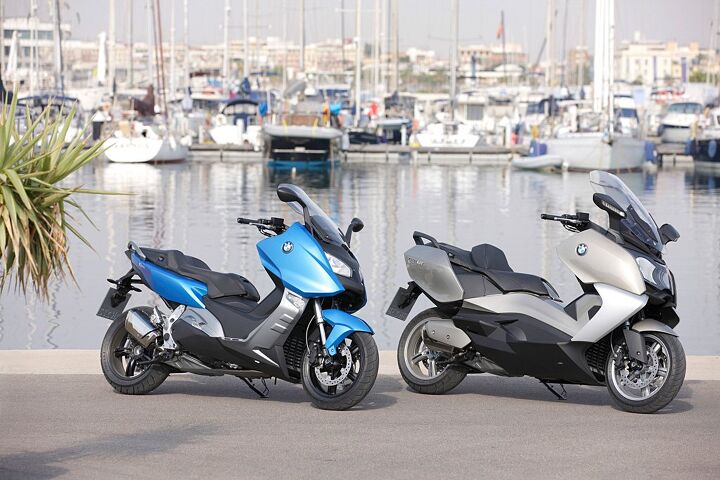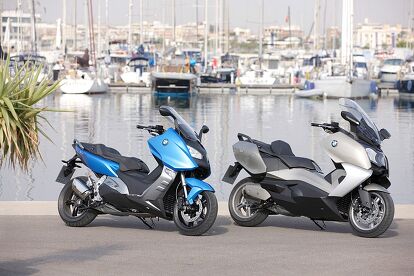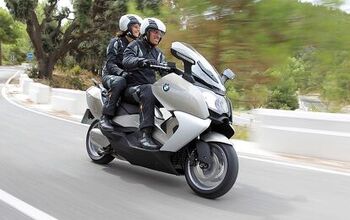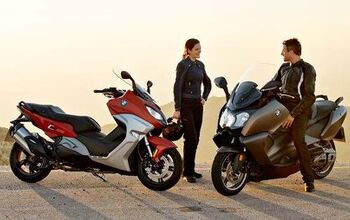2012 BMW C600 Sport and C650GT Scooter Preview
While Japanese OEMs persist in their cautiousness, BMW continues its assault on new markets, most recently with its incredible S1000RR literbike. Over the past four years, the German company has nearly doubled its 500cc-plus market share from about 7% to 13%, and the 2011 model year is on pace to set a sales record of more than 103,000 motorcycles.
For 2012, BMW enters the lucrative scooter segment with a pair of twin-cylinder maxi-scoots claimed to combine the agility and comfort of a scooter with the riding qualities of a motorcycle. The C600 Sport is, like its name suggests, is the sportier version. Unlike the implication of its name, the “600” Sport actually uses the same liquid-cooled 647cc parallel-Twin engine as the more luxurious C650GT. Both will be built in BMW’s Berlin factory. Check out our photo gallery of the new BMW scooters here.
Unlike many scooters, with their small wheels and tires, the C600 Sport and C650GT were designed “to combine directional stability at high speeds on the motorway with playful handling in city traffic and clear feedback to the rider.” The chassis is constructed mostly of a tubular-steel bridge-type frame, augmented by a die-cast aluminum component where the swingarm attaches. The engine also functions as a load-bearing element. Wheelbase is 62.6 inches.
A beefy-for-a-scooter 40mm inverted fork is used for confident steering responses, set at a 25.4-degree rake with 92mm of travel, figures akin to contemporary motorcycles. The rear suspension is handled by a lay-down shock offset to the left side and a single-sided aluminum swingarm. Both C models use 15-inch wheels, with tires sized 120/70 front and 160/60 rear.
Instrumentation is the same on both models. A large-digit analog speedometer is complemented by an outsized LCD info panel that includes a fuel gauge (for its 16-liter tank), rate of fuel consumption, oil-level readout, ambient temperature and tachometer. A power socket is standard equipment, and a powerful 588-watt alternator provides plenty of juice to energize optional headed grips and seats. In addition to two preset (high/low) settings, the seat/grip warmers have a new Auto level that delivers heat based off outside temperature and vehicle speed.
C650GT
C600 Sport
More by Lucas Cooney











































Comments
Join the conversation